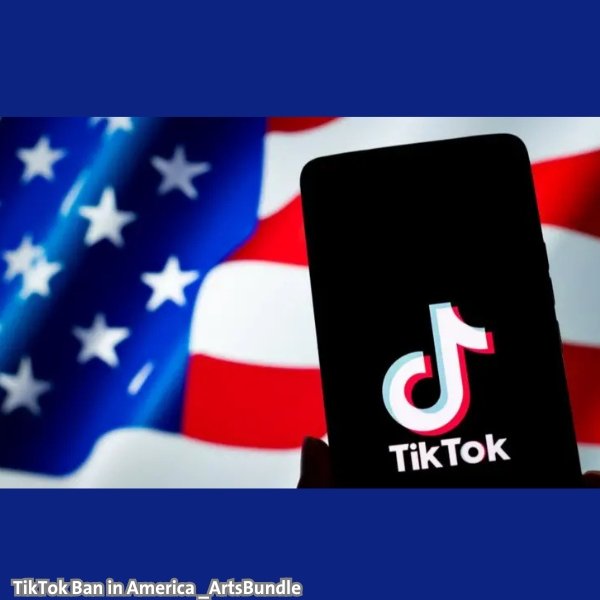The debate on banning TikTok in America is heating up. But do we fully understand its potential impact on our digital world? With over 170 million U.S. users and around $1 billion in potential losses for small businesses, the stakes are high.
As you read on, you’ll discover the reasons behind this ban, including national security concerns and its potential to reshape the future of short videos.
It’s crucial to grasp how the ban could affect creators and marketers. Beyond individual users, it threatens a key digital marketing tool relied on by brands and influencers. Explore what this ban means for you and the future of online content.
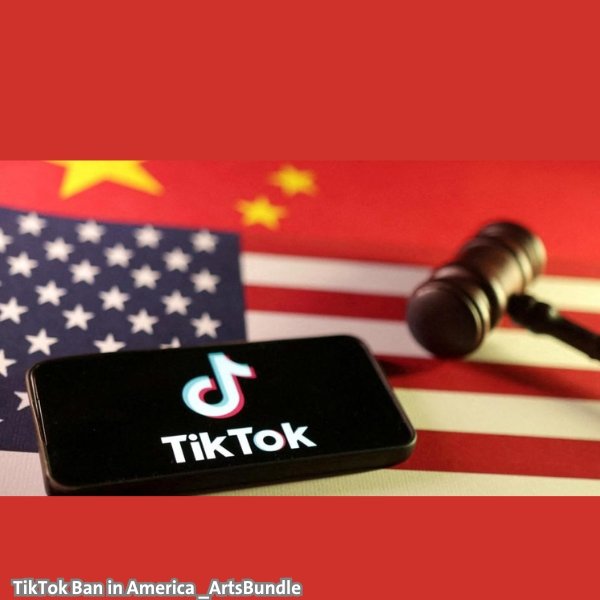
What Led to the TikTok Ban in America
- The path to banning TikTok in America was driven by growing concerns about data privacy and user information access. Lawmakers feared the Chinese government could obtain U.S. user data, leading Congress to act. The House voted 325-65 to advance the ban.
- A foreign aid package including provisions about the app passed with large majorities in both the House and Senate, fueled by concerns it could be used for espionage. ByteDance, the app’s parent company, was given the option to sell its U.S. operations or face a ban.
- The platform reported that about 170 million Americans use it, along with nearly 5 million businesses that rely on it for growth. However, federal and public employees are barred from using it. Lawsuits from states like Indiana and Arkansas added further pressure.
- Leaked recordings revealed that Chinese employees had accessed U.S. user data multiple times, intensifying fears about data security. ByteDance has until October 2023 to meet divestiture demands, keeping the app under scrutiny.
The Supreme Court Ruling on TikTok
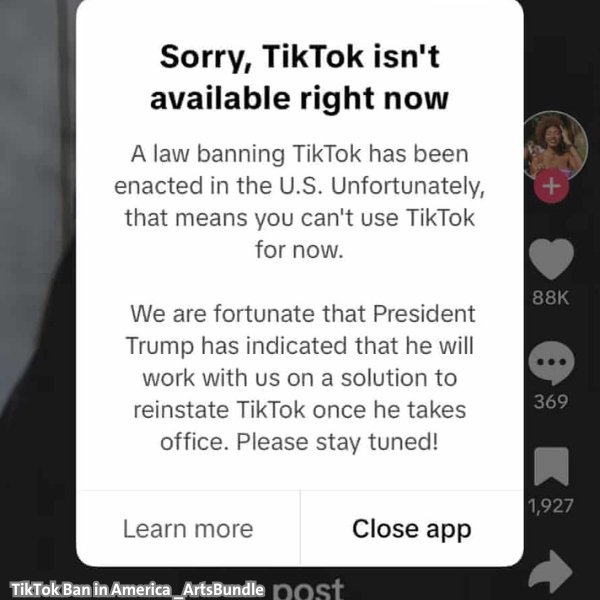
On January 17, 2025, a Supreme Court ruling allowed TikTok to be banned unless ByteDance sells its stake. This decision followed a long debate about First Amendment rights and national security, with the court determining that users’ free speech rights were less important than U.S. data privacy.
The ruling was in accordance with the Protecting Americans from Foreign Adversary Controlled Applications Act, which mandates a ban if TikTok stays under Chinese control. The law begins on January 19, 2025, and will affect over 170 million U.S. users. The court’s decision reflects growing concerns about foreign-controlled apps.
U.S. users posted over 5.5 billion videos in 2023, generating more than 13 trillion views worldwide. TikTok now faces strict rules and fines of up to $5,000 per user for breaking the new laws.
| Key Dates | Event |
| January 10, 2025 | Supreme Court justices expressed skepticism regarding TikTok’s defense of free speech. |
| January 17, 2025 | The Supreme Court ruling allows a potential ban on it pending ByteDance’s compliance. |
| January 19, 2025 | Implementation of new regulations prohibiting its services unless the company is sold. |
National Security Concerns Driving the Ban
- The U.S. government is worried about national security, leading to the ban. They fear data access that could be used by the Chinese government. The platform, owned by ByteDance in Beijing, has faced data breach issues.
- In June 2022, it was found that ByteDance employees in China had accessed user data, raising big concerns about spying and manipulation.
- FBI Director Christopher Wray talked about these worries in 2022, emphasizing the risk posed by the Chinese government’s control over ByteDance. With over a billion users, the platform became a major target for espionage.
- More than 170 million Americans use it, making it a key area of concern for national security.
- Congress has looked closely at its operations, particularly concerned about the Chinese Communist Party’s influence over companies like ByteDance. This led to a 2023 law banning the app from government devices.
- By January 2025, the Supreme Court had upheld the ban, changing how it operates, with users facing possible sell-offs or bans.
The legislation requires the government to prove a significant national security risk to enforce the ban, highlighting the complex relationship between digital platforms and government trust. The debate over data access and national security will continue in the U.S.
Also read: Los Angeles Wildfires: 11 Dead, 21,000 Acres Obliterated – Here’s What You Critically Need to Know!
Impact on TikTok Users and Content Creators
The ban could change a lot for its 170 million American users and many content creators. The app has become a big deal for people who make money from their videos. For example, Brandon Edelman made more money than ever before by focusing on TikTok.
Creators like Jordan Howlett have grown huge followers, posting videos every day and reaching almost 14 million followers. Others, like Devour Power, have also gained millions of followers, showing how popular the platform is.
If banned, creators might lose their audience, which could hurt their chances to make money through ads and partnerships. Many are already looking at other platforms like Instagram and YouTube to stay visible.
Creators are advised to use different platforms to avoid losing their audience, including Instagram Reels and YouTube Shorts. As social media keeps changing, users and creators need to stay flexible and watchful.
The TikTok Ban Timeline and Key Dates
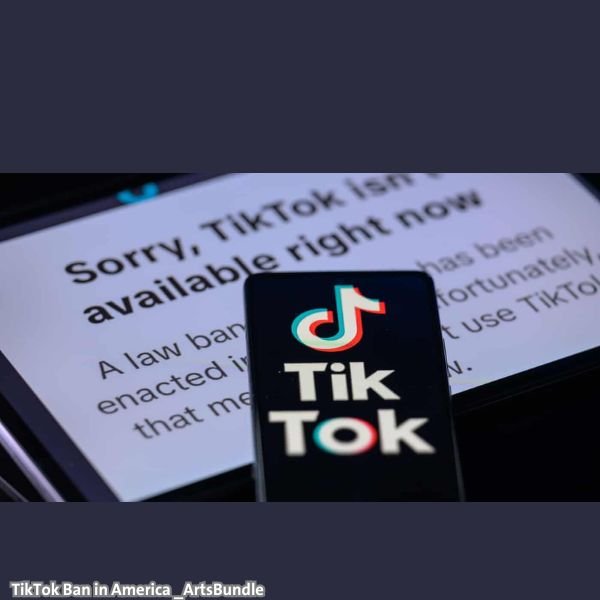
TikTok Ban Timeline
- December 2019: The U.S. Army and Navy banned TikTok on government devices due to security risks.
- August 2020: TikTok filed a lawsuit against the Trump Administration over an impending order to restrict its operations.
- September 2020: The Trump administration moved to ban the app over national security concerns.
- January 2023: TikTok proposed “Project Texas” to localize U.S. user data.
- April 2023: At least 34 states banned the app’s use by government employees and contractors on official devices.
- December 2022: The “No TikTok on Government Devices Act” was signed into law.
- January 25, 2023: A bill proposing a nationwide ban was introduced.
- April 2024: The “Protecting Americans from Foreign Adversary Controlled Applications Act” (PAFCA) was passed, requiring divestment from TikTok.
- January 19, 2025: Deadline for ByteDance to divest, coinciding with the official ban taking effect.
- January 18, 2025: TikTok closed its services in the U.S. at 10:30 p.m. (ET), marking the start of a nationwide ban.
| Date | Event | Significance |
| December 2019 | Ban on government devices | Raised national security concerns |
| September 2020 | Trump administration proposed ban | Initiated serious legislative actions |
| April 2023 | State bans on government devices | Increased public awareness of privacy issues |
| January 19, 2025 | Deadline for ByteDance divestiture | Potentially affects app store availability |
Tracking these key dates in the site ban timeline offers important insights. It shows how laws have shaped TikTok’s current status in the U.S.
Potential Workarounds for TikTok
The possibility of a ban has led users and creators to find ways to keep using the app. They are looking for workarounds to avoid losing access. Even if big changes happen, some strategies might help users get around restrictions.
One idea is for the platform to move its operations to avoid ownership issues. This could lead to legal problems but might be a short-term fix. Another plan is for the app to stop working in the U.S. This could meet government demands while still serving users elsewhere.
Users and creators are starting to look at other platforms if the app is banned. Some popular choices include:
- Instagram Reels – A feature on Meta’s platform that offers a similar short video experience.
- YouTube Shorts – A competitor that lets creators reach an audience used to the app’s style.
- Lemon8 – A new platform that’s attracting users looking for something different.
With about 170 million U.S. users, many of whom are teenagers, moving away from the app could affect other platforms. Users might turn to VPNs or sideloading to keep using it, despite the risks of malware and data breaches.
The legal situation with the app is still unclear, but its users are determined to keep creating online. They are adapting to new trends in social media, with personal data safety remaining a big concern as they face these changes in the digital world.
Government Actions and Legislation Surrounding TikTok
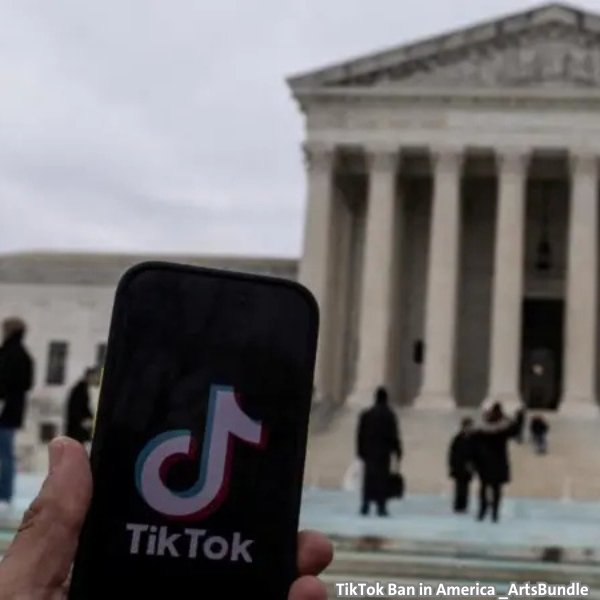
- The world of TikTok laws is changing fast. U.S. lawmakers are worried about data privacy and national security. They agree that strict rules are needed for this popular app.
- The Protecting Americans from Foreign Adversary Controlled Applications Act is a big step. It forces ByteDance, the parent company, to sell its U.S. business.
- There’s a push to stop the app’s use by federal workers. This shows how serious people are about keeping user data safe. States are also taking legal steps, worried about its data handling.
- In December 2022, a big problem was found with the app. Four employees looked at the private info of two journalists. This made people worry even more about keeping user data safe.
- A law that could ban the app is set to start on January 19. The Supreme Court might make a quick decision. Justice Sotomayor pointed out the app’s big data collection, making a strong case for action.
- The app’s investors are also watching closely. ByteDance hopes to sell its U.S. part for $40 billion to $50 billion. This shows how government actions, app laws, and data privacy are all connected.
How the TikTok Ban Affects Digital Marketing
The TikTok ban is a big problem for brands that use it in their marketing plans. It has become a key tool for reaching people with fun content and influencer partnerships. The ban will change how brands market themselves, affecting everyone involved.
Impact on Brands Using TikTok as a Marketing Tool
Brands will face many challenges if TikTok is banned:
- They might find it hard to move their marketing to other platforms, which might not be as engaging.
- Without the app, brands could see a drop in how much people interact with their marketing.
- Marketing budgets might need to be adjusted as brands look at what platforms they can still use.
- Influencer campaigns might not work as well, since 61% of people are more likely to try something new because of influencers.
- Brands will need to look at past data from the app to plan their future influencer strategies.
- Brands that rely too much on the platform might see their engagement levels drop. Data shows that focusing on one platform can hurt performance if there are problems.
- Brands need to update their partnerships to include plans for the restrictions.
- The ban could cost creators over $1.3 billion in the first month. This shows how big of a deal this change is.
- For brands to keep their marketing effective, they must understand and adapt to the ban.
Who Might Buy TikTok?
The search for TikTok’s new owner is exciting, with its value over $100 billion. Only a few big names and groups can afford it. Each buyer has a plan for TikTok, but they must deal with legal hurdles.
Potential Buyers and Market Value Analysis
Some big names and companies are in the running:
- Former Treasury Secretary Steven Mnuchin – He’s putting together a group to buy TikTok, but details are still secret.
- Frank McCourt – He’s got over $20 billion in backing, making him a top contender.
- Tech Giants – Microsoft, Oracle, and Walmart were interested before, showing they still care about it.
- Shark Tank investor Kevin O’Leary – His interest shows it is still attractive, even with legal issues.
- Other Noteworthy Names – Elon Musk and Bobby Kotick are also mentioned, but their plans are unclear.
Tik Tok’s worth drops to $40 billion to $50 billion without its secret formula. The sale’s fate hangs on political decisions, with the Supreme Court’s TikTok ban ruling soon.
| Potential Buyer | Estimated Investment | Strategic Advantage |
| Steven Mnuchin | Undisclosed | Government ties and financial insight |
| Frank McCourt | Over $20 billion | Significant funding commitments |
| Microsoft/Oracle/Walmart | Undisclosed | Corporate strength and market reach |
| Kevin O’Leary | Undisclosed | Broad investment experience |
| Elon Musk | Undisclosed | Innovative technology perspective |
As things unfold, we’ll learn more about who wants to buy TikTok. We’ll see if they can meet the market’s needs and handle the legal challenges.
International Perspectives on TikTok Bans
International Bans on TikTok
- India:
- The app was banned, impacting over 200 million users.
- The ban stemmed from concerns about data handling and ownership.
- Europe and Canada:
- Similar actions focus on ensuring data privacy and user information security.
- United States:
- 76% of adults support banning the app, citing security concerns.
- 60% of U.S. teens believe a ban would significantly impact them, highlighting its importance to younger users.
- The platform is more engaging than Facebook or Twitter, with:
- 57% of users use it for entertainment and socializing.
- 80% rely on it for news and information.
- These statistics underline its role as a key social media platform.
- Challenges in Regulation:
- Despite a 35% increase in laws on content and privacy, implementing a ban remains complex.
- Balancing national security concerns with free speech rights is challenging.
- Experts debate risks linked to its Chinese ownership compared to major data breaches like Equifax.
- Global Perception:
- Ongoing debates shape how the platform is viewed worldwide.
Future of TikTok After the Ban
The future of TikTok looks uncertain with ban implications on the rise. It has over 170 million users in the U.S. A ban could change how people create content on the platform. President Joe Biden signed a law in April 2024 that requires TikTok to separate from its parent company, ByteDance. The Supreme Court backed this law in the Protecting Americans from Foreign Adversary Controlled Applications Act.
The app plans to stop working if it doesn’t get clear guidance by January 19. This could make it disappear from app stores, stopping new downloads. Since 60% of U.S. adults under 30 use the app for news, the ban’s impact is huge for both users and creators.
Several factors will shape its future after a ban:
- Speculation about joining a non-Chinese buyer, like Elon Musk.
- Users might switch to Instagram Reels and YouTube Shorts if they can’t use it.
- Its business model might change as it deals with new rules.
A ban could disrupt operations, even if current users aren’t affected right away. It could change how people engage online and share content, impacting digital engagement and content quality.
| Factor | Implications |
| Divestiture from ByteDance | Potential continuity or discontinuation of operations |
| Legal enforcement of the ban | Uncertainty in user engagement and content creation |
| Competition with other platforms | A possible shift in demographic reach and content style |
| Government stance | Influences market dynamics and user behavior |
Keeping an eye on these changes is key to understanding the future of the app and its community of creators.
Finally, we find that The TikTok ban is a big deal, touching on user privacy, foreign influence, and digital marketing. The app has over 1 billion users worldwide, with 170 million in the U.S. alone. This ban could have big effects on users and creators.
Many Americans, 50%, support the ban because of privacy and security worries. But, 56% of users oppose it. This shows a complex situation in U.S. social media, where personal views often clash with government rules.
The ban could be a turning point, showing the need for strong data privacy laws. Knowing about these changes helps you make smart choices on social media.
What are the main reasons behind the TikTok ban in America?
The main reasons include national security concerns. These concerns are about data access to U.S. user information. They also have a potential influence on the Chinese government. Plus, there are bipartisan legislative efforts to enforce data privacy standards.
How will the TikTok ban impact its 170 million users in the U.S.?
The ban could severely limit users’ access to the platform. This will affect creators who have developed substantial followings and revenue streams. They might turn to alternative social media platforms like Instagram or YouTube.
What does the Supreme Court ruling on TikTok entail?
The Supreme Court ruled unanimously that the site could be banned. This is if ByteDance fails to sell its stake. The ruling balances national security interests with First Amendment rights related to free speech.
What alternatives could TikTok explore to avoid a ban?
The platform could explore relocating operations to separate ownership issues. It could also volunteer to cease U.S. operations to align with government regulations. Or, it could encourage creators to transition to other platforms for continuity.
How has the U.S. government responded to TikTok’s data privacy practices?
The U.S. government has taken multiple actions. It passed the Protecting Americans from Foreign Adversary Controlled Applications Act. This act requires ByteDance to divest. There is also separate legislation limiting app usage on government devices.
Who are the potential buyers of TikTok?
Potential buyers include high-net-worth individuals like investment banker Steven Mnuchin. Tech companies like Microsoft and Oracle are also interested. Notable investors like Kevin O’Leary highlight the app’s market attractiveness despite regulatory hurdles.
What challenges do brands face if TikTok is banned?
Brands may struggle to adapt their marketing strategies to other platforms. They face reduced diversity in their marketing channels. They also experience disruptions in their budgets, possibly impacting engagement metrics.
What are the international responses to TikTok bans?
Countries like India have fully banned TikTok due to security concerns. Others have imposed partial bans or restrictions. This reflects regional and geopolitical tensions regarding data management associated with social media platforms.
What might the future hold for TikTok if it remains operational?
The future of TikTok will depend on legislative changes and buyer interest in the company. It will also depend on user engagement metrics. These factors will influence its cultural relevance and overall viability in the digital landscape.

